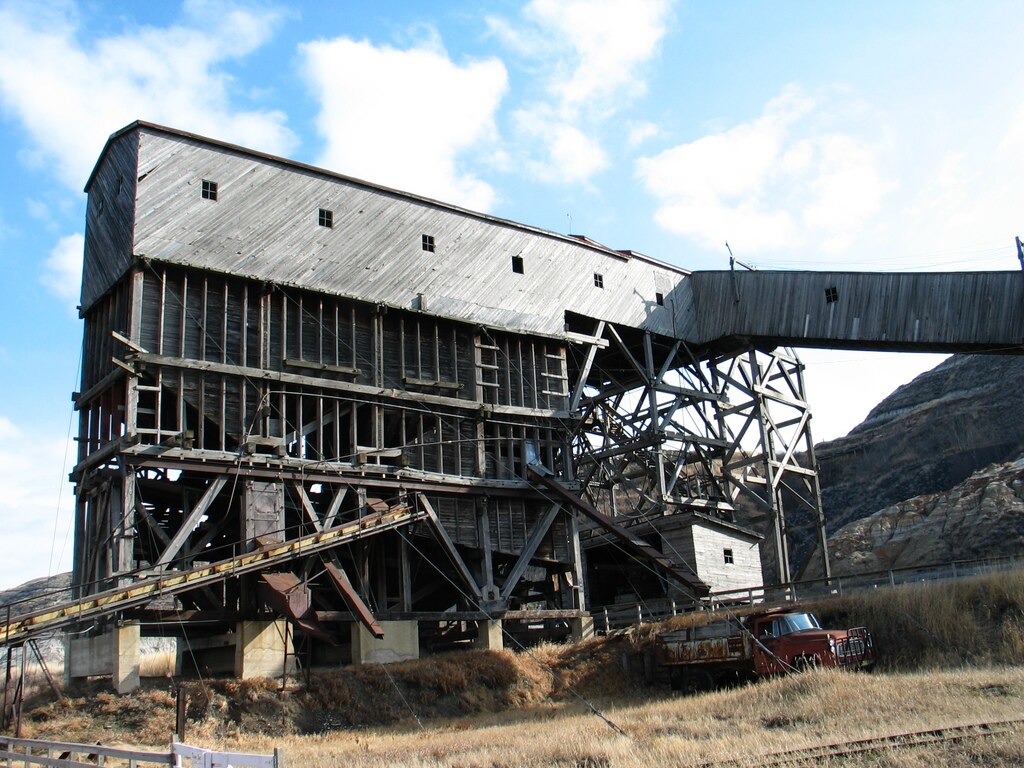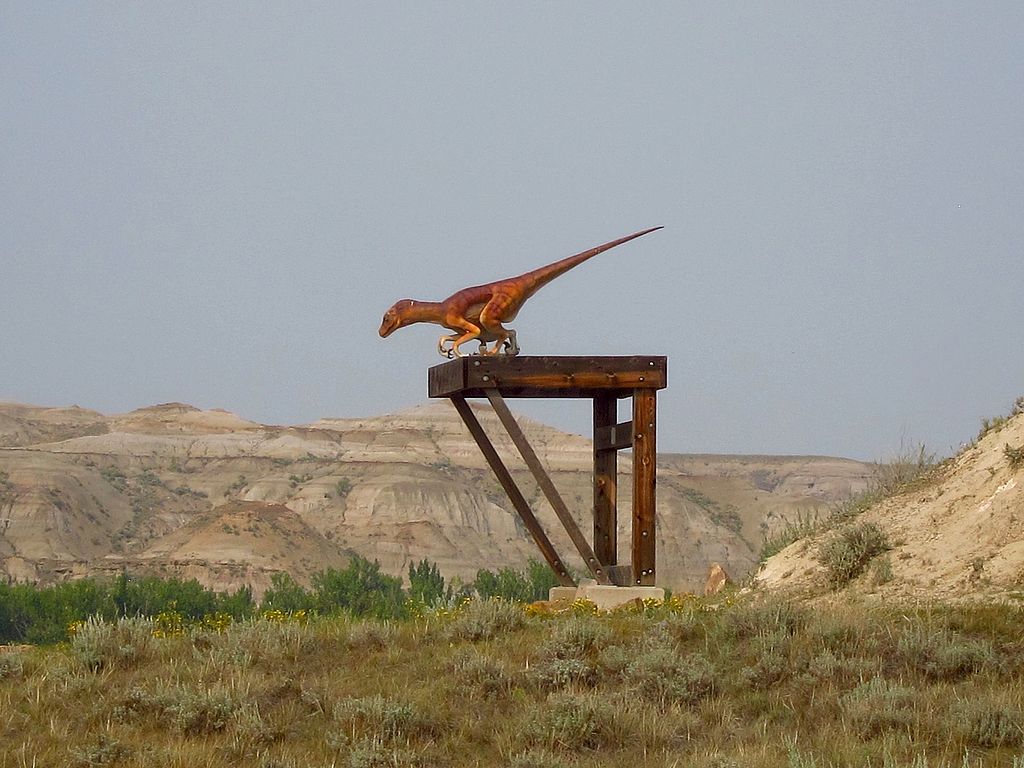In the heart of Alberta’s badlands lies a treasure trove of prehistoric wonders that transports visitors back 75 million years. Dinosaur Provincial Park, a UNESCO World Heritage Site, offers an unparalleled window into Earth’s distant past, when these magnificent creatures dominated our planet. This remarkable landscape not only preserves one of the world’s richest dinosaur fossil beds but also showcases the raw beauty of Alberta’s unique badlands topography. For paleontology enthusiasts, nature lovers, and families alike, this extraordinary park delivers an educational adventure unlike any other in North America.
A Geological Marvel in Alberta’s Badlands

Located about 220 kilometers east of Calgary, Dinosaur Provincial Park spans nearly 80 square kilometers of dramatic badlands terrain. The landscape appears almost otherworldly, with its striking hoodoos, rippling coulees, and layered sedimentary rock formations that have been sculpted by millions of years of erosion. These geological features expose the Late Cretaceous Judith River Group, particularly the Dinosaur Park Formation, which dates back approximately 75-77 million years. The constant cycle of erosion that shaped this landscape continues today, regularly exposing new fossils that provide ongoing discoveries for scientists. This natural erosion process makes the park a living laboratory where the past is continually being revealed before visitors’ eyes.
The Fossil Treasure Trove

What distinguishes Dinosaur Provincial Park from other paleontological sites is the extraordinary abundance and diversity of its fossil record. Since the first major expedition in 1884, scientists have uncovered remains of more than 500 species, including 58 distinct dinosaur species representing every major group of Cretaceous dinosaurs. Over 150 complete dinosaur skeletons have been excavated here, along with countless individual bones numbering in the hundreds of thousands. The preservation quality is often exceptional, sometimes including soft tissues, skin impressions, and even the occasional stomach contents that provide insights into these ancient creatures’ diets. This fossil density—approximately 40 dinosaurs per square kilometer—makes it the richest dinosaur fossil site in the world by concentration.
The Lost World: Understanding the Prehistoric Environment

During the Late Cretaceous period, this region bore no resemblance to today’s arid badlands. Instead, it featured a lush, subtropical coastal plain adjacent to the Western Interior Seaway, a vast inland sea that divided North America. The climate was warm and humid, supporting dense forests of coniferous trees, palms, ferns, and flowering plants. Rivers meandered through this landscape, creating ideal conditions for preserving the remains of creatures that died near these waterways. The environment supported an incredibly diverse ecosystem with not just dinosaurs but also prehistoric turtles, crocodilians, mammals, amphibians, and fish. This rich environment explains why so many specimens became preserved in the sedimentary layers we now explore in the park.
Famous Dinosaur Discoveries

Some of paleontology’s most significant discoveries have occurred within the boundaries of what is now Dinosaur Provincial Park. The imposing Albertosaurus, a slightly smaller relative of Tyrannosaurus rex, was first discovered here in 1884 by Joseph B. Tyrrell, an important figure in Canadian paleontology. The park has yielded numerous specimens of Centrosaurus and Styracosaurus, horned dinosaurs whose remains sometimes form bone beds containing hundreds of individuals, suggesting these animals traveled in large herds. Perhaps most scientifically valuable are the numerous hadrosaur (duck-billed dinosaur) specimens, including the remarkably complete Corythosaurus and Lambeosaurus skeletons with preserved skin impressions. These discoveries have fundamentally shaped our understanding of dinosaur diversity, behavior, and evolution.
Visitor Experiences and Guided Tours

For visitors eager to experience the park’s paleontological wonders, several tour options provide access to restricted areas where fossils are actively being uncovered. The Explorer’s Bus Tour takes visitors into the Natural Preserve zone with stops at significant fossil sites while guides explain the park’s geology and paleontological significance. For those seeking a more hands-on experience, the Centrosaurus Quarry Hike leads participants to an authentic bone bed containing the remains of numerous horned dinosaurs that perished together in a catastrophic flood event. The Fossil Safari offers the remarkable opportunity to develop fossil prospecting skills alongside experienced technicians, teaching visitors how to identify fossil material in the field. These guided experiences ensure both the protection of irreplaceable specimens and provide visitors with authentic encounters with prehistory.
The Royal Tyrrell Museum Field Station

At the heart of the park’s visitor facilities stands the Field Station, an extension of the renowned Royal Tyrrell Museum of Palaeontology located in nearby Drumheller. This facility serves as both research center and interpretive hub where visitors can observe paleontologists preparing specimens recently excavated from the surrounding badlands. The exhibit gallery displays numerous fossils discovered within the park, including several complete mounted skeletons that demonstrate the diversity of the ancient ecosystem. Interactive displays explain the processes of fossilization, excavation techniques, and the scientific methods used to understand these ancient creatures. The Field Station also houses a laboratory where during summer months, visitors can watch technicians delicately removing rock matrix from newly discovered specimens.
Conservation Challenges and Fossil Protection

Protecting the irreplaceable fossil resources of Dinosaur Provincial Park presents unique conservation challenges. The same erosional processes that expose new fossils also threaten to destroy them if they aren’t collected in time. Park authorities maintain a careful balance between scientific research, visitor access, and preservation. The Natural Preserve area, which contains the richest fossil deposits, is accessible only through guided tours to prevent unauthorized collection or damage to specimens. A dedicated team of park staff regularly surveys erosion-prone areas after rainfall events, which often expose new material. Strict regulations prohibit any collection of fossils within park boundaries without proper scientific permits, ensuring these irreplaceable specimens remain available for research and education rather than entering private collections.
Beyond Dinosaurs: The Park’s Living Ecosystem

While the ancient inhabitants receive most of the attention, Dinosaur Provincial Park hosts a fascinating modern ecosystem adapted to the challenging badlands environment. The park provides habitat for numerous prairie species, including pronghorn antelope, mule deer, and over 165 bird species that find refuge in the sheltered coulees. Several endangered or threatened species make their home here, including the prairie rattlesnake, short-horned lizard, and ferruginous hawk. The transition zones between prairie grasslands and badlands create diverse microhabitats supporting rare plant communities, including several species of cacti and yucca. These modern ecological features offer visitors opportunities for wildlife viewing and nature photography that complement the paleontological attractions, especially in early morning and evening when many animals are most active.
Camping and Accommodation Options

To fully experience the park’s magic, many visitors choose to stay overnight in the comfortable campground nestled in a cottonwood-lined valley adjacent to the Red Deer River. The campground offers 126 sites with options ranging from unserviced tenting areas to full-service RV hookups, allowing visitors to select accommodations that match their preferred camping style. For those seeking more comfortable arrangements, the park offers seven comfort camping units featuring actual beds, electricity, and cooking facilities—a perfect option for families or those new to outdoor experiences. The campground’s location provides spectacular sunset views as the evening light transforms the badlands’ colors from tan to brilliant orange and red. Staying overnight also offers the chance to experience the park’s remarkable night skies, far from urban light pollution.
Best Times to Visit

Dinosaur Provincial Park’s visitor season runs from May through October, though each period offers distinct advantages. The summer months of July and August bring reliably warm weather and the full range of interpretive programs, but also draw the largest crowds. Many experienced visitors prefer the shoulder seasons of late May to early June or September to early October when temperatures remain pleasant but visitor numbers decrease substantially. Spring visits often coincide with wildflower blooms that add splashes of color to the badlands landscape. Fall visits feature spectacular golden cottonwood trees along the river valley and increased wildlife activity. The park’s climate is characteristically arid, with dramatic temperature variations possible even within a single day, so visitors should always prepare for changing conditions regardless of when they plan their trip.
Photography Opportunities

For photography enthusiasts, Dinosaur Provincial Park offers endless compositional possibilities throughout the day. Early morning light casts long shadows across the badlands, revealing their textural complexity, while midday sun illuminates the vibrant colors of the layered sedimentary rocks. Sunset transforms the landscape into a palette of warm oranges and purples as the last light catches the tops of hoodoos and ridges. The park offers several designated viewpoints that provide expansive vistas of the badlands topography, including the Trail of the Fossil Hunters and the Badlands Viewpoint. Macro photography opportunities abound as well, from delicate prairie wildflowers to detailed fossil specimens visible along permitted trails. Wildlife photographers will find subjects ranging from the numerous bird species to small mammals and occasionally larger animals like deer and pronghorn, particularly near dawn and dusk.
Planning Your Visit: Practical Information

Visitors planning a trip to Dinosaur Provincial Park should make reservations well in advance, especially for camping accommodations and guided programs during the peak summer season. The park is accessible via Highway 876, approximately a 2.5-hour drive east of Calgary or 48 kilometers northeast of Brooks, Alberta. Services within the park include a small convenience store for basic supplies, though no fuel facilities exist, so visitors should fill their tanks before arrival. Cell phone coverage within the park is limited, particularly in the deeper valleys and remote areas. The visitor center provides interpretive exhibits, program registration, and washroom facilities with running water. All visitors should bring adequate water, sun protection, and sturdy footwear suitable for uneven terrain, as the badlands environment can be challenging with its combination of heat, minimal shade, and steep, sometimes unstable slopes.
Combining With Other Alberta Attractions

Many visitors incorporate Dinosaur Provincial Park into a larger Alberta dinosaur-themed itinerary that includes other significant sites. The Royal Tyrrell Museum in Drumheller, about 100 kilometers northwest of the park, houses one of the world’s largest displays of dinosaurs and provides the perfect complementary experience to the field explorations at the park. The scenic drive between these two locations takes visitors through the changing landscapes of the Alberta badlands. For those with additional time, other nearby attractions include the Atlas Coal Mine National Historic Site, the World’s Largest Dinosaur statue in Drumheller, and Writing-On-Stone Provincial Park with its indigenous rock art. These combined destinations offer a comprehensive understanding of both the region’s prehistoric significance and its more recent cultural history, making for an educational road trip that typically requires at least 3-4 days to fully appreciate.
A Window to Earth’s Ancient Past

Dinosaur Provincial Park stands as one of the planet’s most significant natural history destinations, where the veil between present and prehistoric times seems remarkably thin. The combination of scientific importance, stunning landscapes, and engaging interpretive experiences creates an unforgettable destination for visitors of all ages and interests. Whether you’re watching paleontologists carefully extract fossils from the ancient sediments, photographing the otherworldly hoodoos at sunset, or simply contemplating the vast timeline of Earth’s history while standing where dinosaurs once roamed, this remarkable park offers experiences that cannot be duplicated elsewhere. By preserving and interpreting this exceptional site, Alberta provides not just entertainment but a profound opportunity to understand our planet’s fascinating biological heritage and the magnificent creatures that preceded us.



